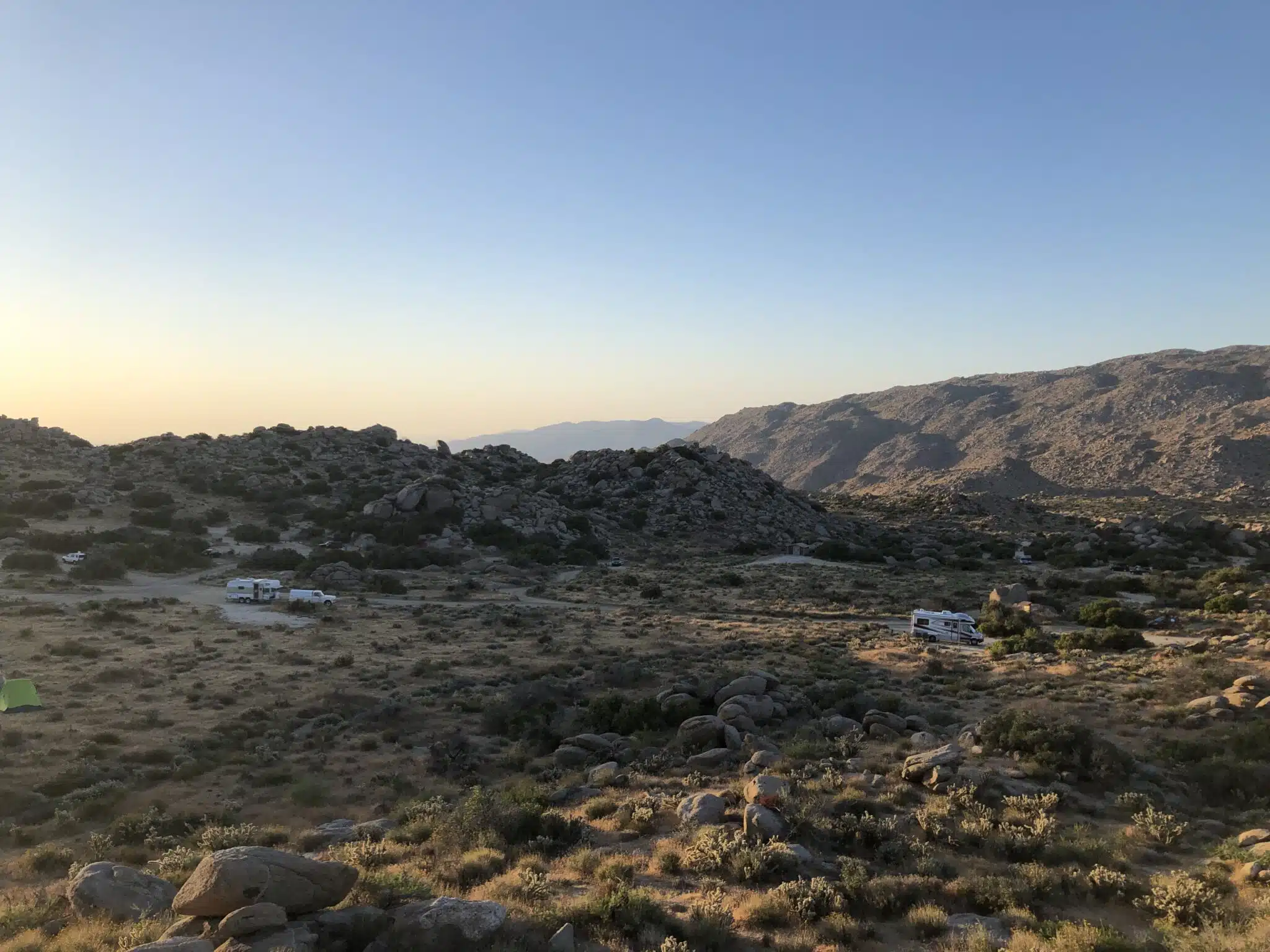
Go Desert Camping in Southern California
- Jessica Cockroft

Southern California is a prime destination for desert camping. You’ll find plenty of options throughout the state’s desert region, from Death Valley National Park at the Nevada border all the way down to the Sonoran Desert that stretches into Arizona and Mexico.
No matter which campground you visit, you’ll need to make sure you’re considering the specific safety concerns that apply to desert camping. If you haven’t already, check out our guide to desert camping to get your mind geared towards this unique adventure! And, if you’re backpacking your way through the desert, check out the Backpacking 101 article.
In this article, we’ve rounded up some great destinations to explore. They range from super popular to lesser known, so you’re sure to find what suits you. Site availability includes first-come-first-serve (FCFS) and by-reservation-only, so do your due diligence before hitting the road to one of these stunning campgrounds!
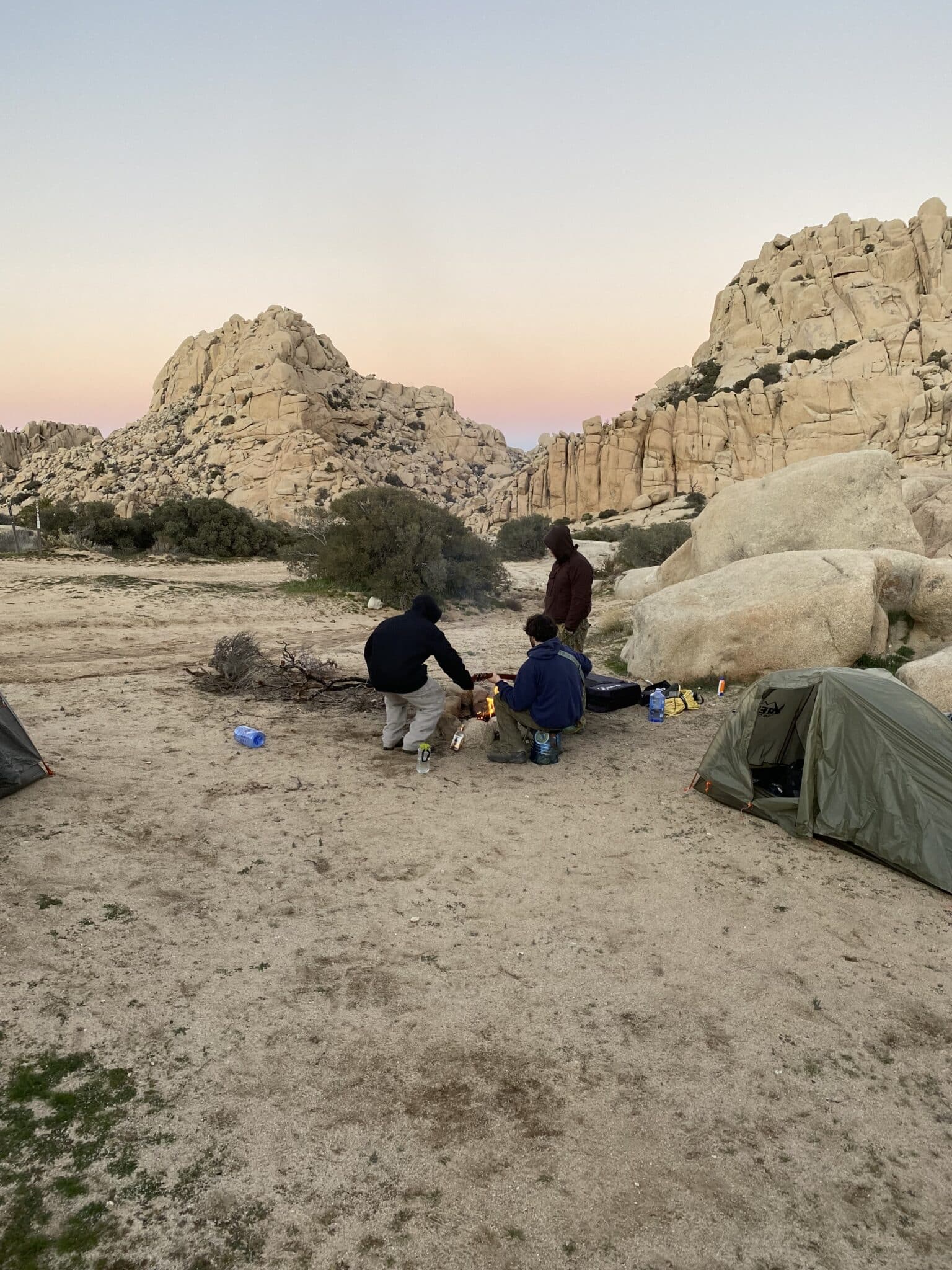
Mojave Desert Camping
The Mojave Desert covers 47,877 square miles of southern California and parts of Utah, Nevada, and Arizona. It’s home to a diverse ecosystem and the epic overlanding Mojave Road. The desert comprises an array of parks, BLM territories, and designated wilderness areas. Each location has its own set of rules and regulations, so it’s important to familiarize yourself with what’s required for travel to your specific campsite.
Can you camp anywhere in the Mojave Desert?
Dispersed camping is allowed in the Mojave Desert. However, fires are only allowed in pre-existing fire rings. Staying in spots that have already been used minimizes the impact on the local ecosystems, so don’t go bushwhacking your way somewhere new just for fun. Here’s a list of dispersed campsites to enjoy your desert stay without leaving a trace.
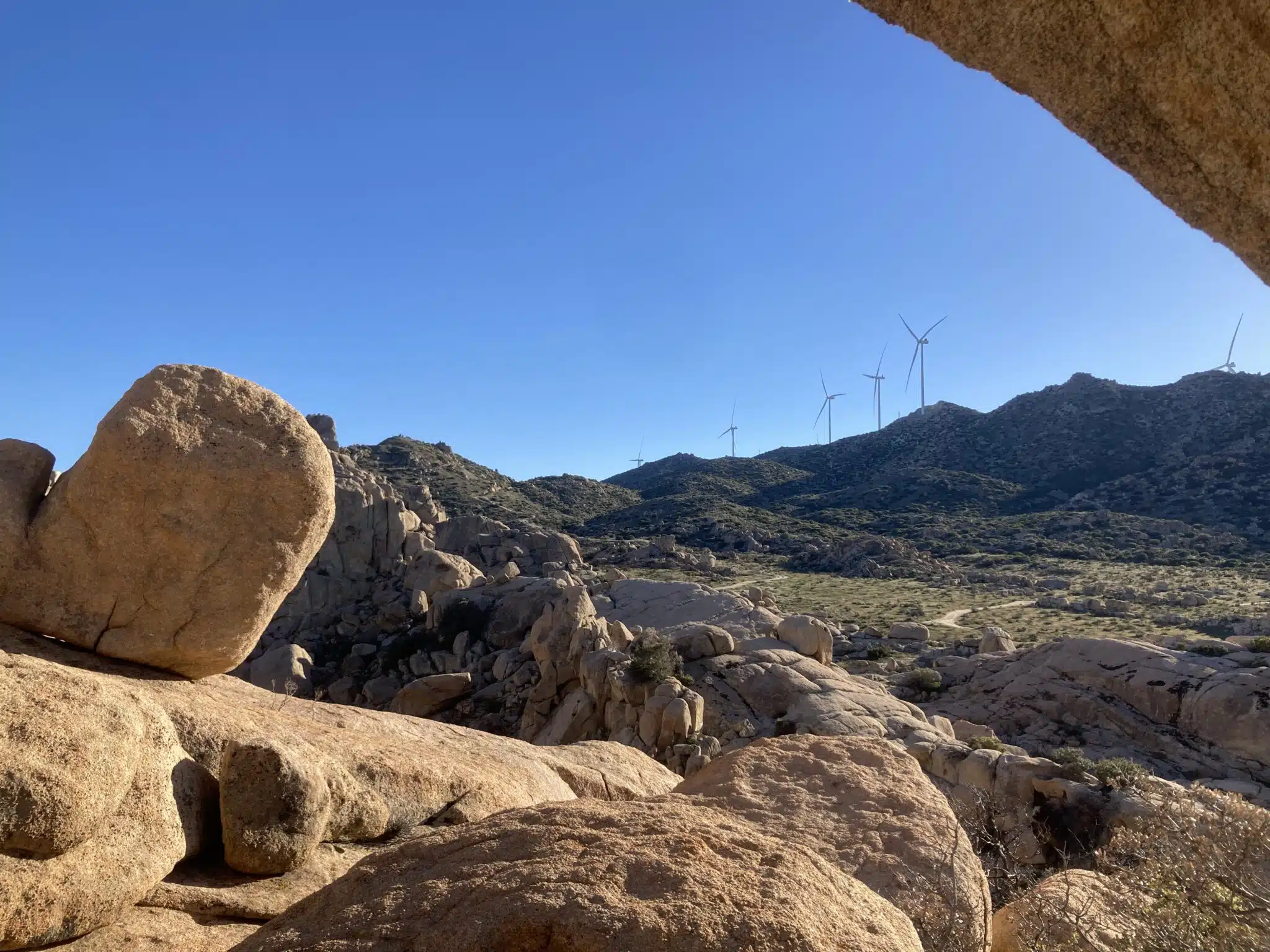
Are there public campgrounds in the Mojave Desert?
Absolutely! There are so many options for public campgrounds in the Mojave Desert. We’ve gathered some to explore and included details to help you choose which one to visit.
Let’s check out a couple.
Afton Canyon Campground
Territory Type: Bureau of Land Management
Number of sites: 22
Water availability: Questionable… piped water is sometimes available, but campers are encouraged to bring their own to be safe.
Nearby trails: Afton Canyon Trail is an out-and-back with a small loop at the far end that’s a little more than 7 miles long. Spooky Canyon Trail follows the same path but adds a couple more miles in the opposite direction.
Reservation requirement: None. These sites are FCFS.
Fees: $6/night
Afton Canyon is nicknamed the Grand Canyon of the Mojave Desert. Its sheer rock walls reach 400 feet high, providing an impressive backdrop for hiking and camping. The Mojave River flows above ground year-round, adding to the appeal. Before you visit, it’s worth researching this location’s rich history. Abandoned mines and buried boxcars will offer a glimpse into the past!
To read more about Afton Canyon Campground, head over to the BLM website.
Hole-in-the-Wall Campground
Territory Type: National Park (Mojave National Preserve)
Number of sites: 35 drive-up; 2 walk-in
Water availability: Water is available, and there is a dump station for RVs.
Nearby trails: Barber Peak runs for 6 miles around the base of its namesake mountain. It’s a loop trail, so you’ll end up right where you started.
Reservation requirement: None. These sites are FCFS (first come, first served).
Fees: $12/night; $6/night for America the Beautiful pass holders
The dramatic volcanic rocks surrounding this campground gave it its name and offer visitors interesting curb appeal. Running water is definitely a bonus feature when camping in the desert, and this particular campground can get busy. It’s not uncommon for it to fill up entirely during spring and fall weekends, so you may want to get there early to secure a spot if you can.
For more on this campground and a list of other National Park options, visit the NPS site.

Joshua Tree Camping
Visiting Joshua Tree is a great way to use that National Park Pass. This park sits at the junction of the Mojave Desert and the Sonoran Desert in southeast California, located east of San Bernadino and north of Palm Springs. You’ll experience the sweeping vista views of the vegetated high desert and unique ecosystems of arid low deserts in this 792,623-acre park. And, of course, your overnight stays will offer an expansive star-scape for your viewing pleasure.
It’s important to note that hanging hammocks from trees is prohibited, so don’t plan on stringing one up for sleeping unless you also bring a stand!
How many campsites are in Joshua Tree National Park?
There are 500 designated campsites in Joshua Tree, the majority of which can be reserved in advance. Several areas of BLM land on the outskirts of the park have dispersed FCFS sites.
Are RVs allowed in Joshua Tree National Park?
The art of foraging is an exciting way to connect with Nature. Cultures all around the world used to practice as a way of life, and I love seeing it become more and more mainstream in my generation. Maybe we’ll resurrect it fully, becoming proficient in our ability to safely identify the earth’s bounty and let it enhance our lives.
Consider this article a jumping-off point. There are a number of excellent resources to continue your education, including online guides and tons of books you can have mailed to your doorstep.
Happy foraging, friends!
Belle Campground
Territory Type: National Park
Number of sites: 18
Water availability: None
Nearby trails: The California Riding and Hiking Trail is a 36.5 point-to-point trail that begins 5.5 miles north of Belle Campground. There’s an access trail that connects with the campground if you’d rather just hoof it from your tent.
Reservation requirement: FCFS – Find a site and occupy it before going to an entrance station to complete registration and pay.
Fees: $15/night; $7.50/night for Seniors and Access Pass holders
This campground sits along the California Riding and Hiking Trail and makes a great stop if backpacking its full length. This campground sits at an elevation of 3,800 feet amongst giant creamy orange boulders and the striking desert vegetation that gave the park its name… Joshua trees! Belle tends to draw a quiet collection of campers, so if you’re looking for a mellow vibe, you’ll likely find it here.
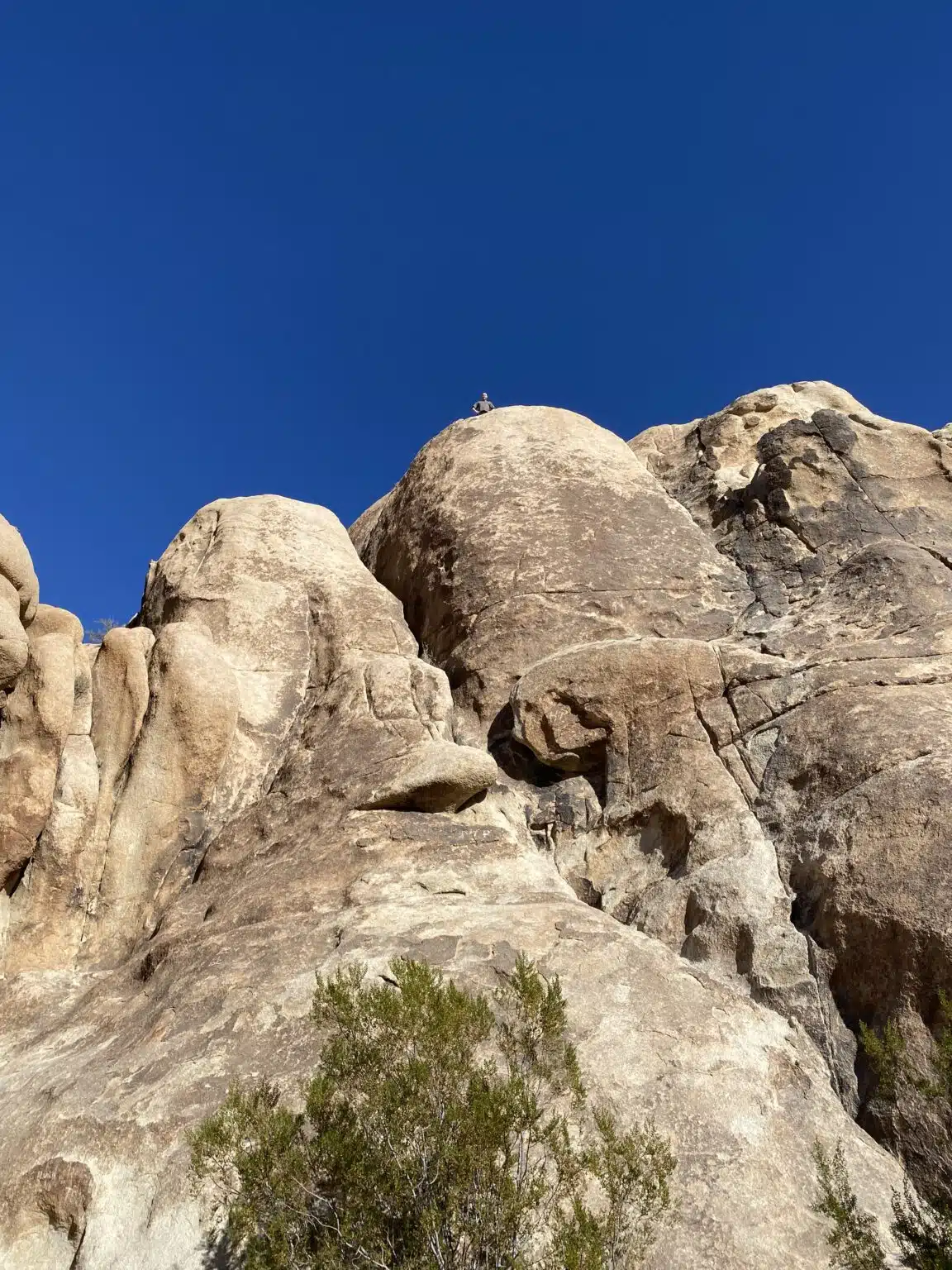
Hidden Valley Campground
Territory Type: National Park
Number of sites: 44
Water availability: None
Nearby trails: Hidden Valley Nature Trail is the campground’s namesake hike, an easy one-mile loop. Several short trails lead to rock climbing routes.
Reservation requirement: FCFS – Find a site and occupy it before going to an entrance station to complete registration and pay.
Fees: Fees: $15/night; $7.50/night for Seniors and Access Pass holders
Its proximity to the park entrance is only part of what makes Hidden Valley a popular choice for desert campers. It goes above and beyond in proximity to adventure as well, specifically rock climbing. Most of the sites back up to rock walls that offer both bouldering and shade for part of the day, and it’s only a quick hike to many trad climbing options. Add that to the expected beauty of a desert night sky, and you’ve got a really enticing contender for a campground!
Learn more from the NPS itself.
Anza-Borrego Camping
Camping in Anza Borrego Desert State Park doesn’t just get you into the International Dark Sky Community. It also offers 640,000 acres of dispersed camping! That makes sense since the Pacific Crest Trail passes through. You can choose from a few reservation campgrounds, which we’ll look at in a second. But, if you want seclusion, head to this gem that sits a mere 70 miles east of San Diego and just go exploring until you find what you’re looking for.
Can you camp anywhere in Anza-Borrego?
Anza-Borrego State Park offers dispersed camping throughout, with a few restrictions around reservation campgrounds and seasonal wildlife activity. Do your research regarding your specific trip timing and if you still feel unsure, just call the ranger station for the most up-to-date information.
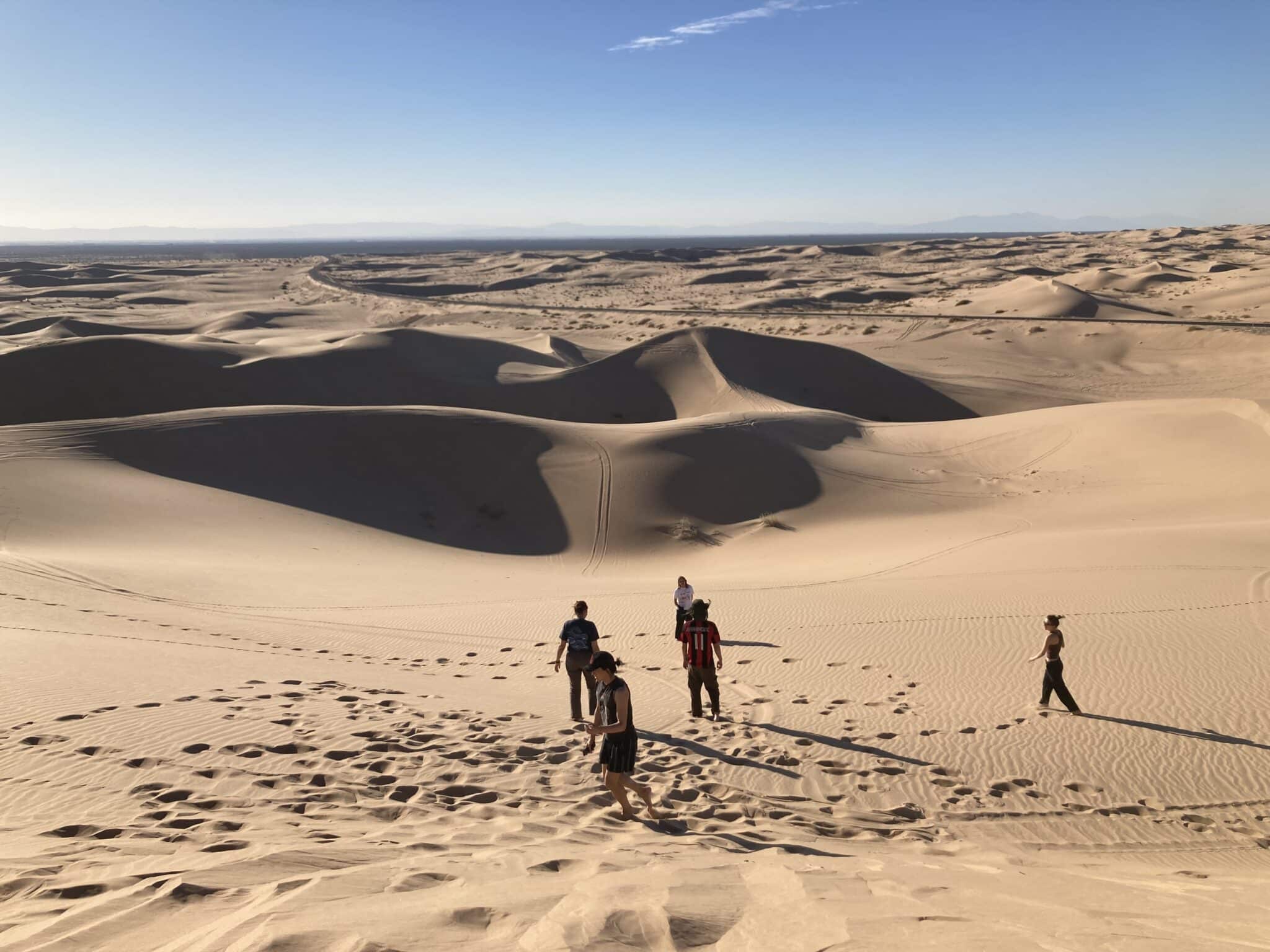
How much does it cost to camp in Anza-Borrego?
Camping fees in Anza-Borrego State Park range from free to $45 for a pull-in site with electric. Group sites are available for $125, which covers 6 vehicles and 25 campers.
Let’s get down to the nitty-gritty about this state park’s campground options!
Bow Willow Campground
Territory Type: State Park
Number of sites: 16
Water availability: None
Nearby trails: Bow Willow Canyon Trail is a challenging loop trail that’s roughly 9 miles long when starting from the campground. For a flatter hike, check out Mountain Palm Loop, a 3-mile hike that connects Bow Willow campground to Mountain Palm campground.
Reservation requirement: FCFS – Find a site and occupy it before going to an entrance station to complete registration and pay.
Fees: $20
Many reviewers mention how quiet and low-traffic this campground is. It’s basic and no-frills… just like me! Pit toilets, fire rings with pergola covers for shade, and dirt pads will give you a solid base camp for exploring the park. The desert floor around this campground blooms beautifully after a rain. Be aware that the roads are sand, and you may need a 4-wheel drive vehicle, so stay in the know regarding conditions before you go.
You can see recent reviews and camper-submitted pictures on various sites, like theDyrt.
Tamarisk Grove Campground
Territory Type: State Park
Number of sites: 27, 11 with primitive cabins
Water availability: The water is not potable, but flush toilets and showers are available, and a small store sells bottled water.
Nearby trails: Yaqui Well Trail and Cactus Loop Trail are both short nature strolls located near the campground entrance. Of course, it’s also a short 7 miles down the road to reach a PCT trailhead if you’re ready to put in some distance.
Reservation requirement: Highly encouraged due to the popularity of this campground.
Fees: $35+
The popularity of Tamarisk Grove Campground can be chalked up to the availability of water and shade. The tall Tamarisk trees, an invasive import from the Middle East, give the campground its name and visitors enjoy shelter from the sun and wind. You definitely don’t feel like a prisoner… unlike the occupants from 1930’s, when the location served as the San Diego County prison camp.
Check out the reservations page to find availability at this campground.

Desert Camping Options in Southern California Abound
As you head out to explore one of the many desert camping options in southern California, don’t forget about weather and wildlife preparedness. Bears visit the desert, too, so keeping your food safe means following responsible food storage guidelines! The desert can be unpredictable regarding temperature and storms, as well. Don’t take the weather for granted so you aren’t caught unprepared.
You can check out our Desert Camping Guide and Backpacking 101 for more detailed safety tips to keep in mind!
Enjoy your desert adventure, friends.
Author Profile

Jessica Cockroft
Jess merges her passion for words and an insatiable longing for adventure as an outdoor freelance content writer and marketer. When she’s not busy stringing words together you’ll probably find her planning another camping trip for her crew of kids or taking care of the homestead. You can find her on LinkedIn and Instagram, as well as on her own website.


